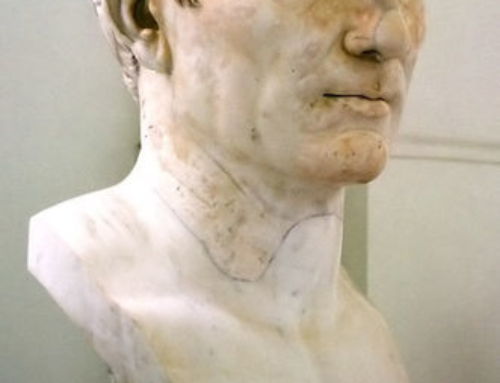I’ve been meaning to read Malachi Martin’s Hostage to the Devil for some time, but too many other books interrupted. Then, earlier this week, when I was at the radio studio recording my own Praying the Rosary for Spiritual Warfare it seemed apposite to borrow Martin’s book when I saw it on the bookshelf.
A good number of the books on the ministry of exorcism are either shallow or sensationalist or both. Martin’s book is neither. While he recounts the well researched stories of five exorcisms, he also spends a good amount of time telling us about both the exorcist and the possessed. He not only listened to the recordings of the exorcisms, but interviewed the people involved wherever possible.
What he brings out is fascinating, because he explores not only the horrible physical and psychic manifestations of demonic possession, but he also delves into the process whereby each person became possessed and how it began, not with extraordinary wickedness or even involvement in the occult (although occult involvement and extraordinary wickedness certainly played a part) Instead the two case histories I have read so far have involved a gradual drift away from orthodox Christian belief and practice, a kind of innate narcissism and low level selfishness.
From there it drifted into blatant self centeredness, and eventually debauchery and an acceptance of the evil forces.
Martin’s first case of “Father Jonathan” was most interesting. A seminarian, then a priest, Fr Jonathan drifted through sentimentality and narcissistic behaviors into a false New Age understanding of his Catholic faith. Infected with the thought of de Chardin, he began to be seduced by a religion that seemed to be more relevant and up to date. Martin shows how the exorcist in each case, was also drawn into similar situations or had complementary problems and difficulties, and why the exorcism was an eye opener for the exorcist as well as deliverance for the possessed.
What is most disturbing, however, is something I suspected for some time. Malachi Martin talks about those who are “perfectly possessed.” In other words the demonic possession is complete. These people no longer exhibit the preternatural signs and beastly manifestations and revulsion at the crucifix, a priest or the Eucharist. They are able to outwardly practice their Catholic religion, but inwardly they have given themselves completely to Satan.
These individuals may be functioning (on the outward level) perfectly adequately as Catholics–even priests, bishops and religious–but they are Sons of Satan. These are the ones who subvert the faith and turn the faithful to the darkness while appearing, on the outside, as angels of light. The writers of the New Testament were well aware of these false teachers. St Paul warns about them. St John calls them beasts and the anti-Christ.
Finally, there are three interesting points that Martin brings out about the technique of the exorcist. While most of us will not witness a real exorcism and most priests, God be thanked, will not have to perform one, the technique against the demon is still educational.
After binding the demon, the exorcist demands to know the demon’s name. This is a reminder that the demons are always liars. They always use a disguise. They always shield their real presence and hide behind some other alias, some other identity and some other, more attractive guise. The lesson is, to fight evil it must first be identified.
Secondly, the exorcist must never allow the conversation to become personal. It is always about Jesus–never about the exorcist. One exorcist in the book fell into the trap when the demon said the exorcist would be made to suffer. When the exorcist said, “I am willing to suffer…” he made it about himself and was doomed. The lesson is, to fight evil it is always Jesus–never us. We cannot fight this in our own power.
Thirdly, the exorcist is told to never engage the demon in any kind of seemingly logical debate or conversation because the demon will always win. He is smarter and a smooth liar. Besides, he does not use logic as a way to discover truth, but as a way to distort truth and promote a lie. The lesson being, when confronted with a false teacher it is usually a waste of time to debate and discuss. The apostles simply condemned them and were done.
This is why, down through history, the most powerful teachers in the church did not debate false teachers who were obstinate in their lies. They pronounced against them and left them to the judgement of God.
With this in mind, what do we do with all the false teachers in our world today? Ross Douthat’s book Bad Religion-How We Became a Nation of Heretics. I am of the opinion that most of them are beyond discussion, and my reasons are outlined here.
Therefore we remain true to the timeless gospel of Jesus Christ revealed in the person of Christ and witnessed to in the Sacred Scriptures. We remain true to the timeless teachings of the Catholic Church and to the teachings of her saints. We maintain true and reverent devotion to the sacraments of the church, try to live out the precepts of the church and engage in the works of mercy and keep our eyes fixed on Jesus Christ who is the author and perfecter of our faith.







Father – This concept of “perfectly possessed” is something that I have suspected for quite some time also and I am in no way theologically trained. Can you write more about this concept? Were people like Joseph Stalin, Mao, and Hitler perfectly possessed? What about the pastor at a local protestant church who puts up LGBTQ banners in front of his church celebrating this sin? Or the Episcopal priestess who blesses things while wearing a rainbow colored sash? There’s no talking sense to these people. Short of God imparting Grace to them, they are lost. But, what of them? Are they perfectly possessed?
The idea of “perfect possession” is fascinating, but we can’t tell if it is accurate since the perfectly possessed do not give outward signs of possession. It is therefore impossible to judge the state of another person’s soul and whether they are perfectly possessed. Better to hope for the best and prepare for the worst!
On seeing this Post I could no longer refrain from registering. It seems I’m forty years ahead of you in reading Hostage to the Devil and it remains one of the most compelling books I have ever read. In promptly questioning clergy and theologians about the veracity I was advised that the subject matter is largely accurate, whether the individual cases are or are apocryphal. I was also advised by some whom I greatly respected to take what was necessary from the book and then close the issue lest I create my own risk. Having 40 years to observe I can tell you I have encountered often what was written about in large part confirming the context. To one point there is the issue of anxiety attacks by clergy while trying to celebrate Mass. The most notorious though far from the most prolific clergy member who was a sexual abuser in our Diocese was noted officially in documents released during the trials to have suffered anxiety attacks during Mass. Often these anxiety attacks lasted as long as fifteen minutes and increased in frequency until the priest was removed from clerical duties. Hostage to the Devil came immediately to mind. Prior to that I observed at least two cases Priests who were either repeatedly tormented by an individual who would show up only at his Masses or in another case a Priest who would descend in gibberish leaving a stunned congregation who would eventually leave.(These were noon masses for working persons in a major city Downtown) Most recently in my own parish our pastor was having more and more difficulty distributing Communion sometimes standing with the host in his hand for one or two minutes quivering sometimes unable to move and from what others told me, sometimes taking the host back from the Communicant. Prior to be reassigned the Pastor explained this away as an extreme reverence for the Body of Christ or sometimes as a quirky sense of humor, he was just playing a little joke – which seem diametrically opposed. When one of these instances happened to me personally I was flooded with memories of Hostage to the Devil. I am not correlating this with any particular assumptions about the individual Priest, only that something is very wrong. It would be interesting if any of the passages of the book bring to light anything you have encountered in the past.
Regarding another Book I will be reading as part of my Lenten Journey I will be looking for correlations with what you have written about yourself and in Bishop Curtis of Wilmington, compiled by the Visitation Sisters of Wilmington. The back cover of this book contains the quote “I am am here in England, investigating Catholicity, and if the Roman Catholic Church is not the truth, then there is no God”- Rev. Alfred Allen Curtis to one of his Parishioners at Mt. Calvary Protestant Episcopal Church, Baltimore. Of course he was directly discoursing with Cardinal Newman while you only had Cardinal Newman’s Legacy but there does seem to be a pattern.
Lawrence, None of these anecdotes surprise me. It is my opinion that the sensational aspects of total demonic possession it is easy to overlook the multitude of people who suffer from what I call “infestation” or “Infection”. They function pretty normally most of the time and they may even practice their Catholic faith or be a priest or religious, but they have given one area of their life over to the demonic and in that area they remain in bondage. It is often their sexuality, but it may be their pride, professional vanity, their possessions. They have not only, by their own choice, yielded that area to the demon, but they have also (more importantly) NOT yielded it to God. In that area they remain in bondage, and of course, should they continue to give in and not fight that problem, then Satan will attempt to take another connected territory of the soul and then another. This is why minor exorcisms and what I call “self exorcisms” are important. Self exorcism being a regular, intentional repudiation of Satan and his power over that area–along with the powerful prayers of the Blessed Mother. On the other matter, I haven’t heard of Rev. Stone, but I suspect Mt Calvary is the same church that has now joined the Ordinariate of the Chair of St Peter
Actually, I was speaking about the Journey of Bishop Alfred Allen Curtis, who left Baltimore’s Mt. Calvary P.E. in 1872, journeyed to England to seek answers at Oxford and intended to speak with Cardinal John Henry Newman. Obviously his meetings with Blessed John Henry Newman erased any doubts and Curtis returned to Baltimore, attended St. Mary’s Seminary, was ordained and eventually made Bishop of the Diocese of Wilmington. A sponsor of the Cloistered Sisters of the Visitation, whose Convent he had built during his years as Bishop of Wilmington, the Sisters published his Journals in 1911 shortly after his death. The Journals which I am reading now were republished in 1991. The very recent decision by the Congregation of Mt. Calvary is no doubt the result of Prayer, over 145 years, if you think of it, but not really surprising. I always thought it interesting that many of the Episcopal Bishops of their own Diocese of Wilmington were installed in the beautiful Catholic St. Elizabeth’s Church (Built by Bishop Curtis), ostensibly because it seated so many more people than any of the Episcopal Churches. The Catholic Diocese of Wilmington during Bishop Curtis’s time Included the entire Delmarva Peninsula – Delaware and the Eastern Shores of Maryland and Virginia. The two Eastern Shore Counties of Virginia were later given to Richmond. I always think of Bishop Curtis when I listen to those who rail on about being more Catholic than most because they are Irish, Italian or Polish.